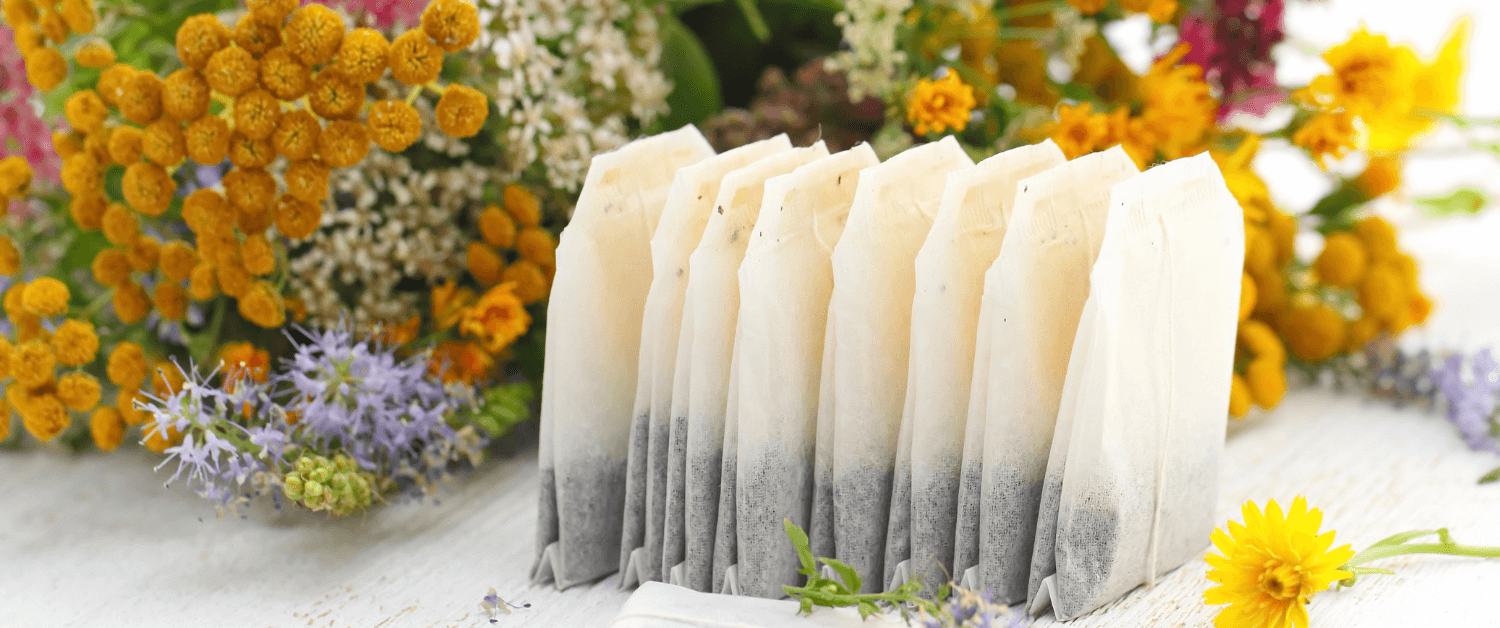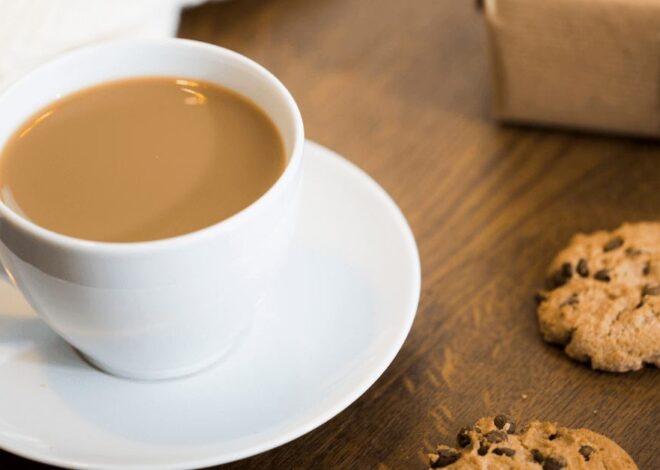
Tea Bags: What’s Brewing Inside Your Cup?
Many tea lovers, including myself, enjoy brewing fresh, flavourful blends using loose tea leaves at home. But what happens when travel, office life, or time constraints push us to opt for the ever-convenient tea bags? Do they compromise on health? Can a simple tea bag change your body’s chemistry over time? Let us dive into what is steeping inside those tiny sachets and find out what you’re sipping.
What makes Tea Bags so Convenient?
-
-
- Tea bags offer unmatched ease for tea lovers on the go, thanks to their pre-portioned design that requires nothing more than hot water, just steep and sip!
- Their compact size makes them perfect companions for office breaks, travel routines, or any moment when time is limited.
- Unlike loose-leaf tea, which often demands strainers or infusers, tea bags eliminate the need for extra tools, making the brewing process delightfully simple.
- You will find them almost everywhere, in grocery stores, cafes, and hotel lobbies, with varieties ranging from calming chamomile to zesty masala chai, offering a quick fix for every mood.
- Their long shelf life ensures that you can stock up without worrying about freshness, a bonus for anyone who values convenience.
- From bold black teas to soothing herbal infusions, there’s truly something for every palate.Many popular brands amplify their appeal with “healthy” sounding blends, promoting exotic herbs, floral notes, or detoxifying labels that sound promising.
-
Yet beneath this convenience, there may lie hidden trade-offs that many tea enthusiasts overlook, especially when it comes to quality and packaging materials.
Are Tea bags Bad for your Health?
Tea bags may seem harmless and convenient, but a closer look reveals that not all are created equal.
-
-
- Many commercial tea bags are made from plastic-based materials like nylon or polyethylene terephthalate (PET), which are known to release microplastics when exposed to boiling water. These microscopic fragments can enter the body and have been associated with health issues like inflammation etc, raising concerns about long-term exposure.
- Even traditional paper tea bags aren’t entirely risk-free; some are treated with chemicals such as epichlorohydrin, a compound used to strengthen the paper that can leach into your cup, especially during hot steeping.
- Beyond the packaging, the tea itself often lacks quality. Flavoured varieties, while aromatic and enticing, may contain synthetic additives and artificial fragrances that dilute the natural wellness benefits of tea.
- Moreover, most mass-produced tea bags are filled with “tea dust” or “fannings,” the lowest grade of tea particles, which hold significantly fewer antioxidants compared to whole leaf options.This nutrient loss is particularly evident in green and herbal teas, where delicate compounds like catechins and polyphenols are crucial to their health-promoting properties.
- Strong flavourings are frequently used to mask the inferior quality of leaves, giving the illusion of richness while hiding a subpar brew.
-
So, while tea bags do deliver speed and simplicity, they might also carry some hidden compromises worth reconsidering, especially if you are sipping with health and authenticity in mind.
Loose Tea vs Bagged Tea: Is there a Health Gap?
-
-
- Quality of Leaves: Loose-leaf tea and bagged tea differ greatly in quality, health benefits, and environmental impact. Starting with the leaves themselves, loose-leaf tea typically contains whole, high-grade leaves that retain their essential oils and full flavour, while bagged tea often relies on dust or fannings, the tiny remnants from leaf processing, resulting in a lower-grade brew.
- Flavour Profile: Loose-leaf tea offers a rich, nuanced taste that can be tailored to personal preferences, whereas bagged tea tends to have pre-set flavours that may include artificial additives and lack depth.
- Nutrient Density: Nutrient-wise, loose leaves preserve a higher concentration of antioxidants, especially in varieties like green or herbal teas, while the smaller particles in bagged tea lose much of their potency during processing.
- Packaging Risk: Packaging is another critical difference.Loose-leaf tea generally avoids plastics unless you choose to bag it yourself, whereas many commercial tea bags are made with microplastic blends like nylon or PET, which can leach into your brew when steeped.
- Eco-Friendliness: Eco-friendliness follows suit. Loose-leaf tea creates minimal waste and is compostable if stored correctly, while bagged tea often comes with plastic wrappers and non-biodegradable components, making it far less sustainable.
-
Altogether, these pointers highlight how choosing loose leaf tea isn’t just about taste. It is a conscious choice for quality, health, and the planet.
Common Questions Tea Lovers Ask
-
- Is it okay to use tea bags daily? If the bags are unbleached and plastic-free (look for corn fiber or paper-based), then yes, occasionally. But whole-leaf brewing wins for daily rituals.
- What is the safest type of tea bag? Choose organic brands using biodegradable bags. Read labels and avoid “silken” or mesh pouches unless specified as corn or plant-based.
- Can microplastics enter my bloodstream? Research is ongoing. Some studies suggest that particles enter the organs of animals.
- Do flavoured tea bags harm gut health? Artificial flavouring can disrupt gut flora over time. Stick to naturally spiced options (think cinnamon, ginger, Tulsi).
Health-Friendly alternatives to Traditional Tea Bags
For those seeking healthier alternatives to conventional tea bags, several options blend convenience and wellness.
-
-
- One of the most practical upgrades is a portable infuser bottle perfect for steeping loose-leaf teas wherever you are. These bottles often come with built-in strainers, allowing you to enjoy fresh brews without the mess of traditional setups.
- If you are constantly on the move, travel-friendly tea sachets made from biodegradable, natural fibers like corn starch or hemp offer a safe and sustainable swap. You can enjoy them on the go with effortless steeping, completely free from microplastic concerns.
- For a more traditional and therapeutic approach, consider Indian-style herbal blends such as kadha, which combine ingredients like Tulsi, cinnamon, cloves, and black pepper to create a warming, immune-boosting drink.(If you have health conditions/ pregnancy/allergies, take medical advise before swaitching to home made kadhas).
-
Conclusion: Choose Wisely, Sip Mindfully
Tea is more than a beverage; it is a ritual, a comfort, a wellness tool. But what is inside your cup matters. While tea bags offer unmatched ease, they often trade health for convenience. Opting for high-quality loose-leaf teas, biodegradable sachets, or brewing your herbal mixes can elevate both your tea game and your well-being.
So next time you are reaching for a quick brew, ask yourself, What is steeping in my cup?



